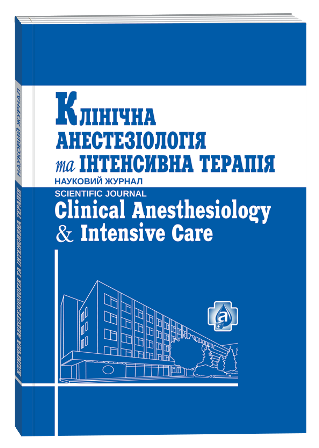DIAGNOSIS, PREVENTION AND CORRECTION OF HEMOSTASIS IN PATIENTS WITH UTERINE FIBROIDS IN THE PERIOPERATIVE PERIOD
Keywords:
hysterectomy, hemorrhage, fibrinolysis, tranexamic acidAbstract
Background — study of decrease of perioperative blood loss in patients with hysterectomy. The choice of methods of diagnosis, prevention and correction of complex hemostasis disorders in patients with uterine cancer in the perioperative period. Methods. The patients were divided into two groups depending on the choice of the hemostatic therapy. The 1st group (44 patients) did not receive specific hemostatic therapy. The 2nd group (48 patients) received 15 mg/kg of tranexamic acid 30 min before the operation and 10 mg/kg — after 6 hrs. Assessment of the degree of blood loss was conducted at the end of the first postoperative day with taking into account both perioperative and postoperative blood loss (within the 1st day). Condition of hemostasis before, after, and the day after the operation was controlled by low-frequency piezoelectric thrombelastographу. Results. Before surgery, patients of both groups revealed changes in the coagulation system by enhancing aggregation type, and moderate hypercoagulation and oppressed fibrinolysis. The obtained data confirm that use of tranexamic acid reduce perioperative blood loss by 38.65% in patients with hysterectomy. Conclusions. Using the low-frequency vibration piezoelectric hemoviscozimetry allows operatively and reliably estimate the kinetics of thrombosis beginning with the initial viscosity up to clot formation and fibrinolysis, identify hemocoagulation disorders in patients with hysterectomy before, during and after the surgery for a long period, which gives an opportunity to correct system of hemostasis at a proper time. Tranexamic acid is an effective drug to limit perioperative blood loss when performing hysterectomy.
References
Вихляева Е. М. Молекулярно-генетические детерминанты опухолевого роста и обоснования современной стратегии при лейомиоме матки / Е. М. Вихляева // Вопросы онкологии. – 2001. – № 47 (2/3). – С. 200–204.
Савицкий Г. А. Миома матки: проблемы патогенеза и патогенетической терапии / Г. А. Савицкий, А. Г. Савицкий. – СПб., 2000.
Новый метод в исследовании функционального состояния системы регуляции агрегатного состояния крови / О. А. Тарабрин, И. И. Тютрин, А. В. Туренко [и др.] // Інтегративна антропологія. – 2011. – № 2 (18). – С. 37–40.
Диагностика, прогнозирование и комплексная коррекция нарушений в системе регуляции агрегатного состояния крови (РАСК) у больных, перенесших экстирпацию матки / В. Н. Запорожан, О. А. Тарабрин, С. Р. Галич [и др.] // Здоровье женщины. – 2011. – № 3 (59). – C. 64–66.
Guarnaccia M. M. Traditional surgical approaches to uterine fibroids: Abdominal myomectomy and hysterectomy / M. M. Guarnaccia, M. S. Rein // Clinical Obstet. Gyn. – 2001. – Vol. 44, N 2. – P. 385–400.







